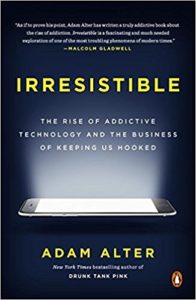This past summer, during an address to Google employees, Sylvia Ann Hewlett, the acclaimed expert on workplace power and influence, revealed some startling statistics. For starters, today in the US, only approximately eight percent of top earners are women. This is precisely the same number as 15 years ago.
The real bottleneck occurs just below the most senior levels, in the marzipan layer, where women comprise 34-percent. Yet, at the summit, Dr. Hewlett’s statistics indicate that women only represent:
- 4.2% of CEOs at Fortune 500 companies
- 15.7% of board members at Fortune 500 companies
Status quo
For over 20 years, Dr. Hewlett has deeply researched how, and what it takes, to reach the corporate world’s top echelons. As the founder and CEO of the Center for Talent Innovation (CTI),
Dr. Hewlett has spent years investigating the nuances of corporate advancement.
During her presentation, she noted that although there’s been progress at the lower and middle career rungs, CTI wanted to try to determine how people got to the top of US corporations.
What its surveys and research identified is that power is transferred through a replication process. Senior leaders seek to duplicate themselves. They favor people they are most comfortable with, in other words, people like themselves, graduates of the same schools, for example. In essence, the research showed that the long-standing status quo, with white men at the top still prevails.
Less latitude for women
There’s a very narrow window for women. Dr. Hewlett refers to this window as the “Fine Line of Executive Presence,” where women have less leeway. What CTI’s investigation made very clear is that today women are not seen as potential leaders and consequently, rarely chosen. There are four factors, or let’s say excuses, each with a contradictory point of view:
Approach
- She’s too opinionated and too bossy
- She’s too retiring and passive
Appearance
- She dresses too provocatively
- She’s frumpy
Attitude
- She’s too pushy, too show-off-y
- She’s too self-deprecating
Age
- She looks too young
- She looks too old
During her Google address, Dr. Hewlett made very clear that it’s important for all ambitious people to establish specific goals. Another major benefit of setting these markers is that it sharpens the focus on potential sponsors and powerbrokers, people who can actually help to advance careers
Four ways women convey the potential for advancement
We wanted to learn more about Dr. Hewlett’s specific recommendations for women and turned to a Forbes* interview where she gives very clear direction.
Essentially, women must consistently reflect these four behaviors:
1. Focus on developing Gravitas, “the confidence and judgment you inspire in others to follow and trust your vision… it signals that you not only have depth and heft but you also have the confidence and credibility to get your point across and communicate the authority of a leader.”
2. Learn to make compelling presentations, look people in the eye and avoid getting bogged down with notes, lists and slides.
3. Good grooming is imperative at every career stage.
4. Women must make it clear they want genuine feedback and then deal with recommendations unemotionally, not take them as criticism.











